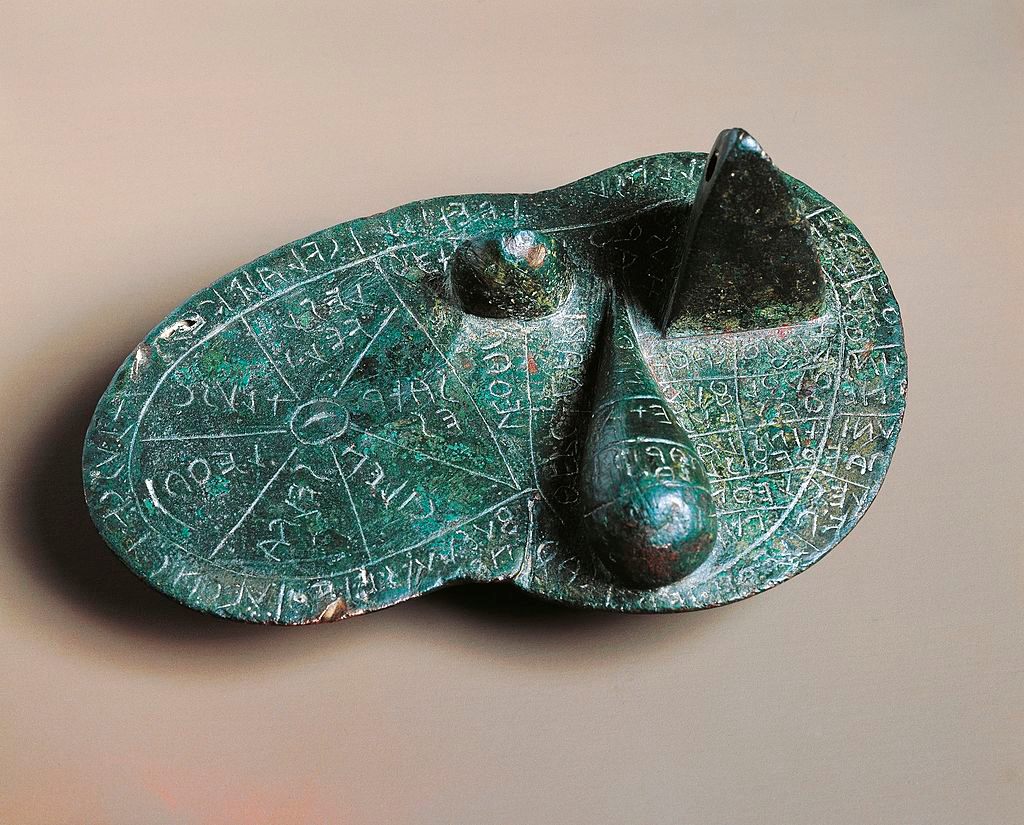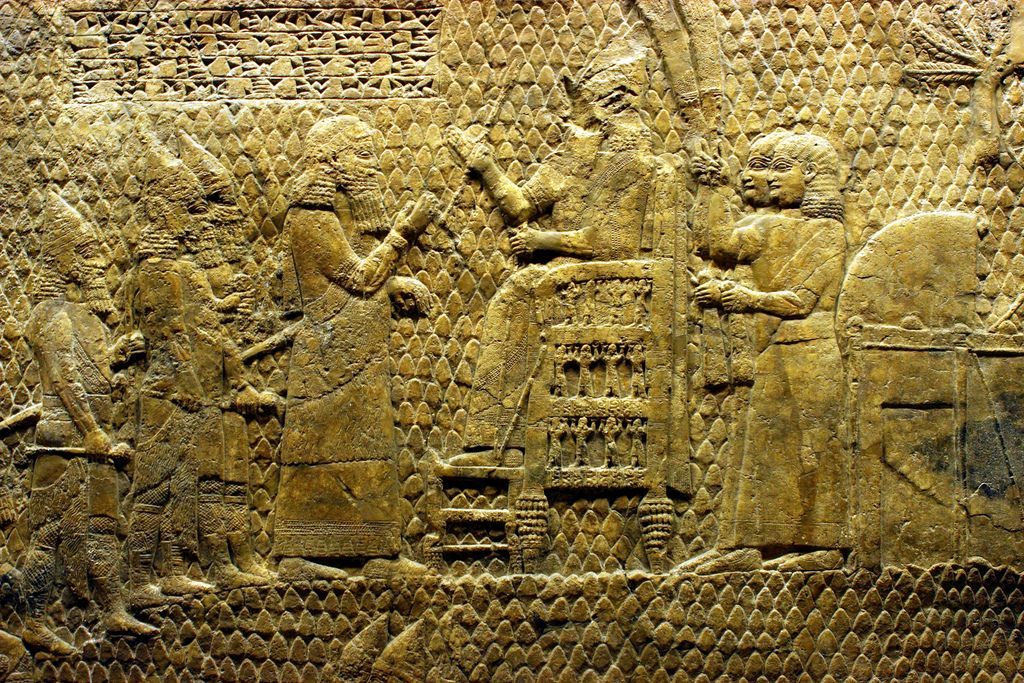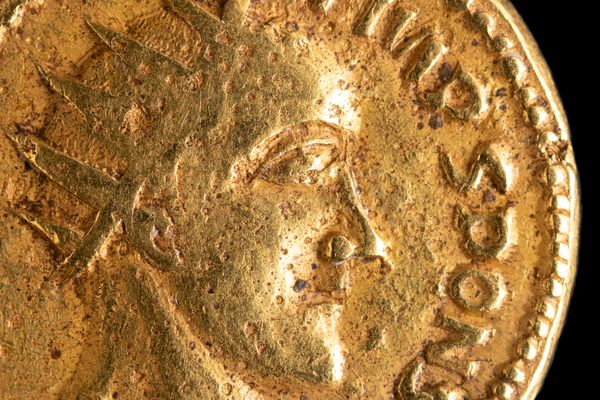The Clay Models Used to Analyze Entrails in the Ancient World
Need to tell the future? Consult the library of livers.

The ancient world offered up tons of unusual ways of telling the future and divining the will of the gods. These methods ranged from cleromancy (interpreting lots that were cast) to the Homeric practice of ornithomancy (interpreting the flight of birds). In second-millennium B.C. Mesopotamia, professional oracle-priests—a.k.a. barutu—would ritually sacrifice an animal—think oxen, goats, sheep, cattle—and read the entrails (a process called extispicy). In the process, they created models of the organs in question that served as tiny prophecy libraries.
Very often, the priests chose to inspect and evaluate a sacrificed animal’s liver, which was deemed the location of the soul and number-one site for all internal activity. Divining by inspecting the liver was called hepatomancy. On behalf of the person who brought the animal to the temple, the priests asked the gods a question; the gods inscribed the answer in the entrails. Thus, a liver’s shape, color, condition, and any evidence of disease could be used to divine the future and decipher the meaning of otherwise confusing symbols or events. Barutu then recorded these events for future reference by crafting miniature clay models of the livers they’d just analyzed.

Each liver model was uniquely shaped, with divinatory interpretations inscribed for future generations. Dozens of clay liver models have survived, some of the most remarkable hailing from the Syrian city of Mari, an important Levantine power, around 1875 B.C. They were found in the ruins of the palace of King Zimri-Lim, the last powerful monarch of Mari; Zimri-Lim kept a vast library of just such religious, legal, and administrative texts.
Both the divine inscription on the organs and the barutu writing them down represented a very early tradition of literacy. The liver models were divided into squares; each square was inscribed with any blemishes or marks that had appeared in those exact locations on the original liver. The appearance of parts of the liver affected the resulting prophecy. For example, Babylonian omen texts from the seventh century B.C. refer to “the Yoke,” a section near the dorsal edge of the liver. One inscription from the period reads, “If the Yoke has disappeared: The city and its inhabitants will perish.” Conversely, if “a piece of flesh [shaped] like a male doll” lies on top of the Yoke, “the army will rejoice”; presumably, that meant the king’s armies would triumph over enemies.

Barutu also held important roles at court; one named Asqudum was chief baru/royal counselor to Zimri-Lim and his predecessors. One such model from Mari was inscribed with “When my country rebelled against Ibbi-Sin…it is thus that the liver appeared.” Ibbi-Sin was king of the important city of Ur about 50 years before this Mari model was made; archives of past liver models had been kept in the intervening decades to allow the next generations to interpret a similar model, which seemingly contained warnings of rebellion.
Over the centuries, liver models became popular across the ancient Near East, from Assyria to Babylonia, Anatolia to Cyprus. For example, the seventh-century B.C. Assyrian monarch Sennacherib reportedly summoned his diviners to figure out why his father’s death in battle wasn’t foretold, in order that Sennacherib’s own heir wouldn’t suffer the same fate. Sennacherib concluded that his barutu had ignored some important omens, perhaps deliberately, so he split up his diviners into groups so they couldn’t conspire to lie to him. In fact, it wasn’t uncommon for kings (you had to be rich to be able to sacrifice multiple animals) to order omens to be taken multiple times until they got the answer they wanted. In Sennacherib’s case, the barutu eventually concluded that his father, Sargon II, was killed for ignoring a particular deity; Sennacherib was thrilled that he figured out what his dad had done wrong so his son wouldn’t make the same mistake.

By the first millennium B.C., haruspicy—and the Near Eastern symbolic names for parts of the liver—had spread to Italy and been picked up by the Etruscans. Some means of interpretation were transferred; for example, livers were positive omens, and blemishes were negative. The Etruscans interpreted the liver as a mirror of the cosmos, however, an organ not just written on, but also inhabited by, the gods. So the gods not only communicated through the liver, but embodied said organ.
Perhaps the most famous model is the Liver of Piacenza, a model divided into 40 sections, each of which was given the name of a divinity. In this case, the cosmological liver model might be a diviner-priest’s handbook to interpreting an organ. Presumably, the state of a liver would reflect the state of the cosmos at large and the gods’ wills; a mark in the part of the liver would be interpreted differently depending on its location and the god inhabiting that portion. The Romans took up Etruscan augury (indeed, Roman diviners were called haruspices). In Cicero’s On Divination, the orator questions the logistics of divination, asking, “How did the soothsayers manage to agree among themselves what part of the entrails was unfavorable, and what part favorable; or what cleft in the liver indicated danger and what promised some advantage?” By listening to their guts, that’s how.























Follow us on Twitter to get the latest on the world's hidden wonders.
Like us on Facebook to get the latest on the world's hidden wonders.
Follow us on Twitter Like us on Facebook